The world is filled with ancient monuments built by master craftsmen in order to honor everything from kings and presidents to religious figures. And although most of these landmarks have been carefully studied and researched by scientists and historians, some are simply so old, incomplete, or obscure that we still don't know very much about why they were built or what purpose they served. The following are 10 world landmarks that, whether by intention or simply due to the passage of time, continue to baffle the people who study them.
10.The Cahokia Mounds
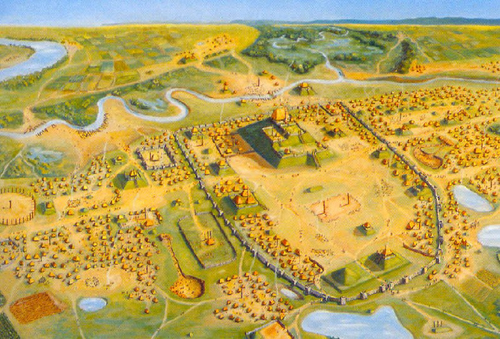
Cahokia is the name given to an Indian settlement that exists outside of Collinsville, Illinois. Archeologists estimate that the city was founded sometime around 650 AD, and its complex network of burial grounds and sophisticated landscaping prove that it was once a thriving community. It has been estimated that at its peak the city was home to as many as 40,000 people, which would have made it the most populous settlement in America prior to the arrival of the Europeans. The most notable aspect of Cahokia today are the 80 mounds of earth, some as high as 100 feet, which dot the 2,200-acre site. These helped create a network of plazas throughout the city, and it is believed that important buildings, like the home of the settlement's chief, were built on top of them. The site also features a series of wooden posts that archeologists have dubbed "woodhenge." The posts are said to mark the solstices and equinoxes, and supposedly figured prominently in the community's astronomical mythology.
9.Newgrange
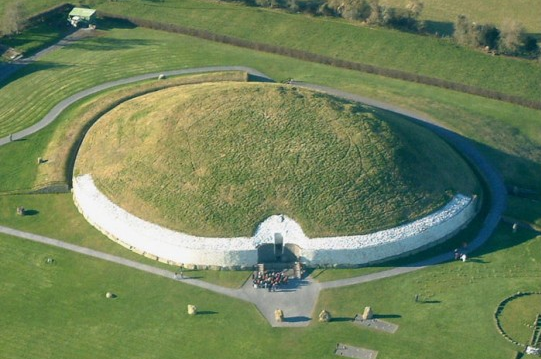
Considered to be the oldest and most famous prehistoric site in all of Ireland, Newgrange is a tomb that was built from earth, wood, clay, and stone around 3100 BC, some 1000 years before the construction of the pyramids in Egypt. It consists of a long passage that leads to a cross-shaped chamber that was apparently used as a tomb, as it contains stone basins filled with cremated remains. The most unique feature of Newgrange is its careful and sturdy design, which has helped the structure remain completely waterproof to this day. Most amazing of all, the entrance to the tomb was positioned relative to the sun in such a way that on the winter solstice, the shortest day of the year, the rays from the sun are channeled through the opening and down the nearly 60 foot passageway, where they illuminate the floor of the monument's central room.
8.The Yonaguni Monument
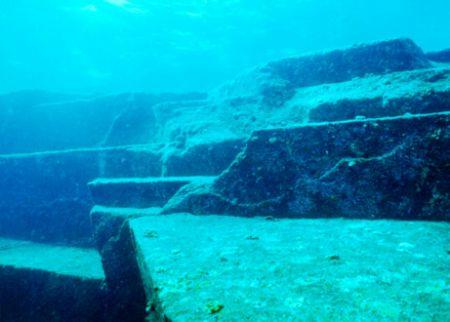
Of all the famous monuments in Japan, perhaps none is more perplexing than Yonaguni, an underwater rock formation that lies off the coast of the Ryuku Islands. It was discovered in 1987 by a group of divers who were there to observe Hammerhead sharks, and it immediately sparked a huge amount of debate in the Japanese scientific community. The monument is made up of a series of striking rock formations including massive platforms, carved steps, and huge stone pillars that lie at depths of 5-40 meters. There is a triangular formation that has become known as "the turtle" for its unique shape, as well as a long, straight wall that borders one of the larger platforms. The currents in the area are known for being particularly treacherous, but this has not stopped the Yonaguni monument from becoming one of the most popular diving locations in all of Japan.
7.The Nazca Lines
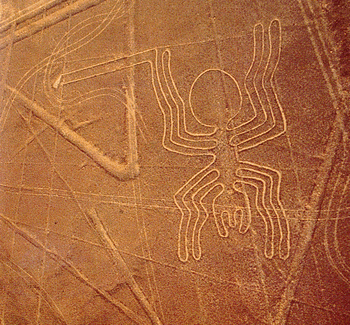
The Nazca lines are a series of designs and pictographs carved into the ground in the Nazca Desert, a dry plateau located in Peru. They cover an area of some 50 miles, and were supposedly created between 200 BC and 700 AD by the Nazca Indians, who designed them by scraping away the copper colored rocks of the desert floor to expose the lighter-colored earth beneath. The lines have managed to remain intact for hundreds of years thanks to the region's arid climate, which sees it receive little rain or wind throughout the year. Some of the lines span distances of 600 feet, and they depict everything from simple designs and shapes to characterizations of plants, insects, and animals.
6.Goseck Circle
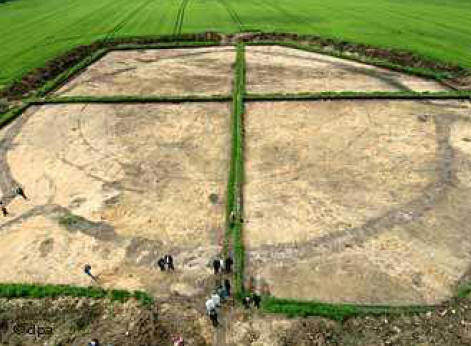
One of the most mysterious landmarks in Germany is the Goseck Circle, a monument made out of earth, gravel, and wooden palisades that is regarded as the earliest example of a primitive "solar observatory." The circle consists of a series of circular ditches surrounded by palisade walls (which have since been reconstructed) that house a raised mound of dirt in the center. The palisades have three openings, or gates, that point southeast, southwest, and north. It is believed that the monument was built around 4900 BC by Neolithic peoples, and that the three openings correspond to the direction from which the sun rises on the winter solstice.
翻译:漫小飒 来源:前十网











